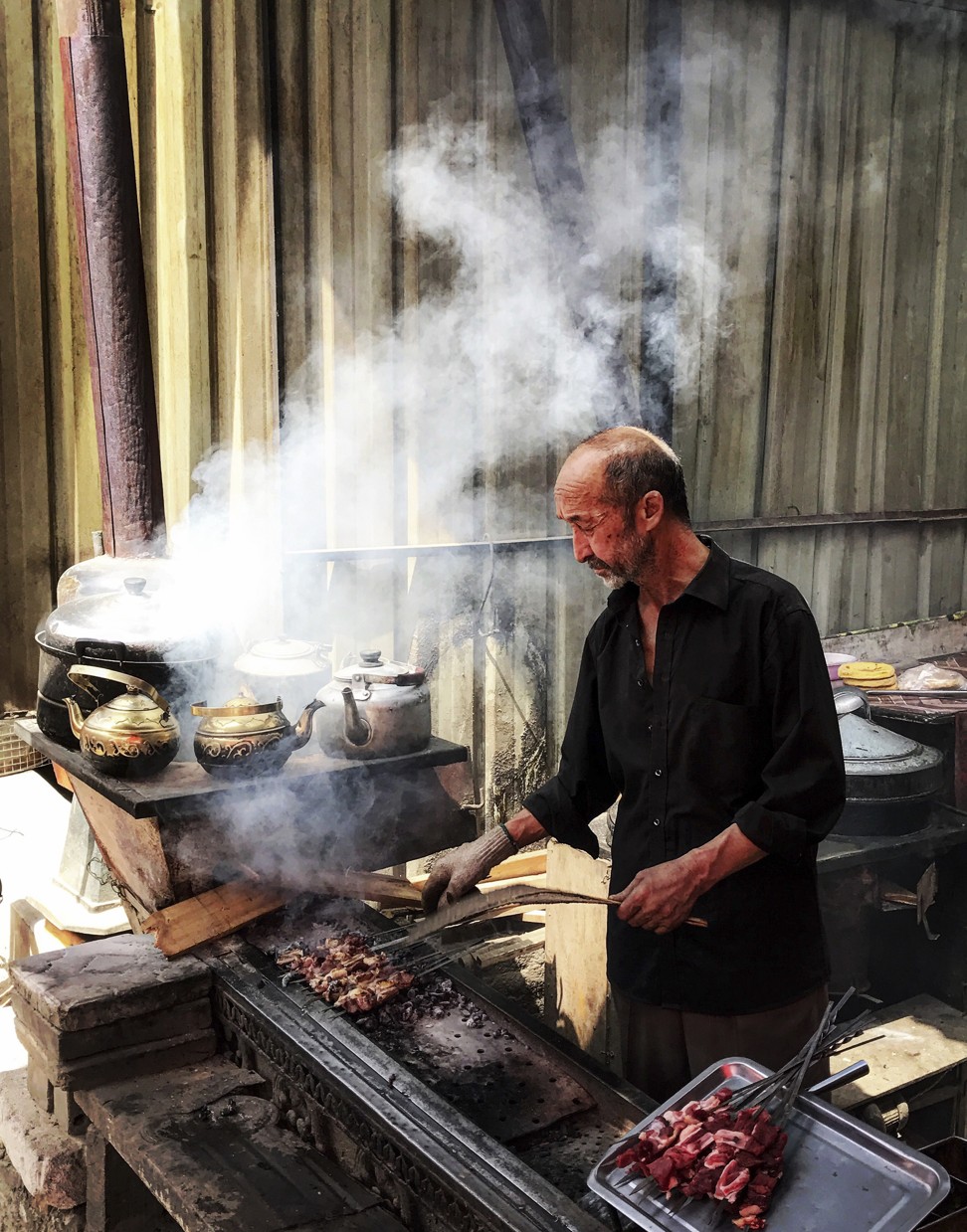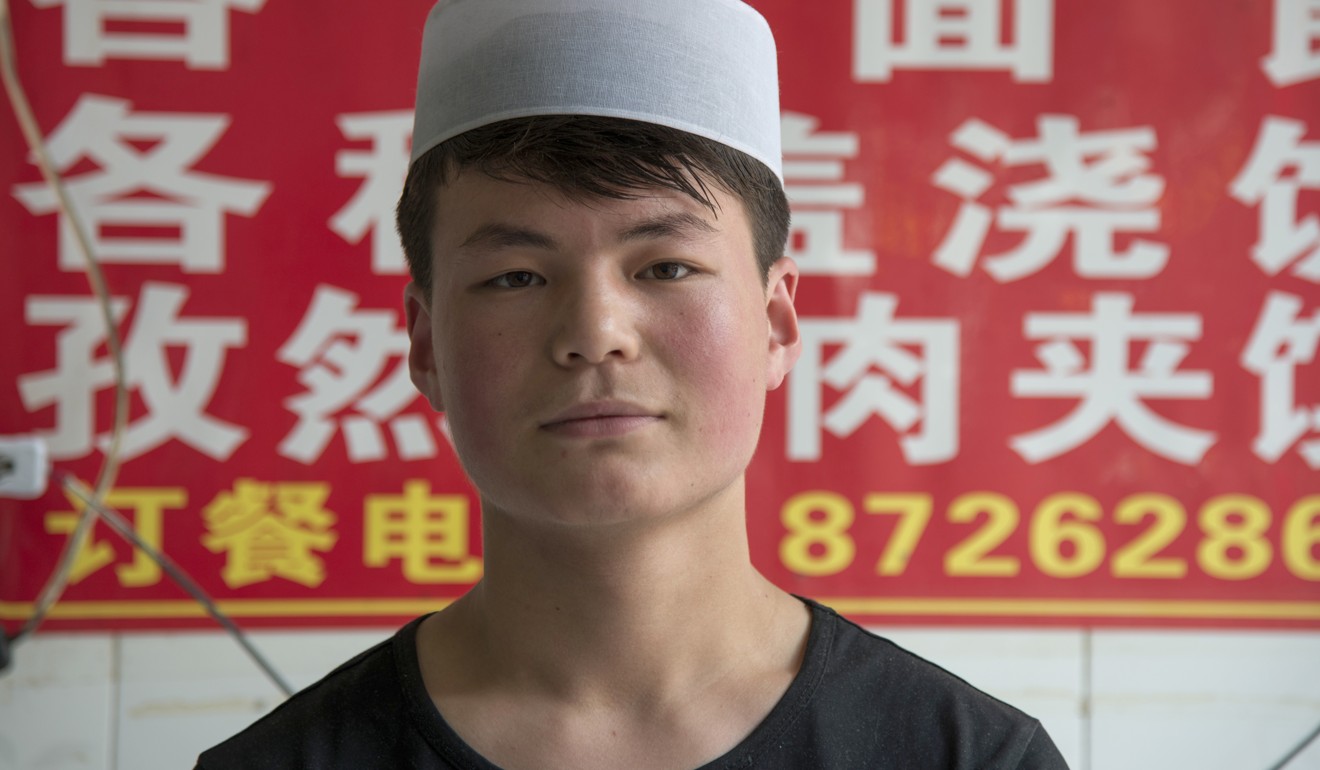
Kebabs, baked eggs and savoury pastries: the Chinese Muslim food trail
Fat tail lamb but no pork, wheat noodles and breads baked in a pit oven – the food of the Hui and the Uygurs is deliciously different to the fare found in other provinces
There are 10 Muslim minorities in China, the main two being the Hui and Uygurs. The former are descendants of Arab and Persian traders who intermarried with Han Chinese and are barely distinguishable from other Chinese, apart from practising Islam and abiding by its dietary rules. The Uygurs are a Turkic people with their own Arabic-script language, dress and appearance – their features are more Caucasian than Chinese.
Their food is distinct from that of other Chinese regions, first and foremost because they don’t eat pork, which is forbidden in Islam. Instead, they favour fat tail lamb. They also use wheat to make their hand-pulled noodles (leghmen or laghman), dumplings (mantu) and steamed buns, and a range of savoury pastries (samsa) and breads that are baked in a tonur, or pit oven.
And instead of making plain steamed white rice, Uygurs turn it into a rich pilaf with carrots and peppers, to serve with boiled lamb.
I recently travelled to several cities to research the food of both Hui and Uygurs, starting in Beijing, before going southeast to Xian in Shaanxi, then northwest to Hotan, Turpan, Urumqi and Kashgar in Xinjiang.

I ate mostly on the street, where the food was consistently more exciting than in restaurants, but sadly not in any homes. However, most street food vendors can be considered home cooks in that they often prepare their specialities at home to sell on the street; or they just prepare the dishes in their stall, making for a fascinating and enlightening spectacle.
Kebabs were the common thread everywhere I went. The meat – almost always lamb, or to be more accurate, mutton, as sheep are slaughtered quite old there – was cut into medium-sized chunks, threaded onto metal or wooden skewers, and interspersed with pieces of fat tail to keep it juicy.
The kebabs are grilled over charcoal, burning inside long narrow metal boxes, except for a couple of vendors I came across in Kashgar who grilled their kebabs in a tonur, placing the skewers upright against the hot walls of the oven. They were the best and juiciest kebabs I had.
Where to find Hong Kong’s most delicious post-drink kebabs (we ate them sober just for you)
The seasoning was pretty much the same everywhere – a simple sprinkling of black pepper, cumin, salt and a little chilli. Once done, the kebabs are wrapped in a soft naan that had been warmed by placing it over the grilling meat.

The restaurant served excellent versions of pretty much the whole repertoire of Muslim Chinese cuisine, from pilaf to hand-pulled noodles, dumplings, kebabs and even home-made yogurt, brought in by a lovely old man.
They served the pilaf with thinly shredded pickled carrots, which added a nice zing to an otherwise plain dish.

In Xian, I sampled a few specialities that disappeared as soon as I went northwest, with the most exquisite being a persimmon beignet, made in two different ways at two separate stalls. The better version was made with a thick, stretchy batter pressed into a shallow ladle, which the vendor lowered into the hot oil to release what eventually would turn into a wide, flat beignet that really tasted of persimmon. The other vendor made his with a firmer dough that he filled with palm sugar and shaped into thick discs. Not surprisingly, his were denser and less delicious.
Why China’s Hui Muslims fear they’re next to face crackdown on religion
I was also intrigued by what people describe as the Xian burger (rou jia mo), made with minced cooked beef or lamb stuffed into a griddle-baked bun that reminded me of harcha, a Moroccan semolina bread, also cooked over a griddle.

In the covered night market in Hotan, the food changed noticeably. One typical speciality was eggs roasted over embers. The cluster of roasted egg vendors seemed to have every egg under the sun, from tiny pigeon to huge ostrich eggs. You could have them simply hard-roasted or soft-roasted and flavoured with saffron.
The latter were prepared by cracking goose eggs wide enough for a spoon to be inserted. The white was discarded and several more yolks were addedalong with a little saffron water. The yolks were stirred before the eggs were nestled in the embers. Every minute or so, the vendor would take the eggs out to stir the yolks until they became half hard.

In that market, both chicken and lamb kebabs were spiked at an angle around a circular metal tray with a charcoal fire in the middle. There were also vendors touting whole roasted lambs, which they sold by the piece.
Beijing bans kebab vendors’ grills to tackle pollution
From Hotan onwards, both noodles and dumplings, all freshly made, were similar everywhere I went: I had them thick, round and al dente with a stir-fry of meat and vegetables, flat (sometimes torn into bite-sized pieces) tossed in a sauce, and thin and soft in broth, to name a few. Some dumplings were filled with meat and onion, others with a mixture of vegetables and meat.

There were also lots of steamed buns, with the plain ones acting as bread. I was lucky to catch a vendor making the multilayered bread one morning outside the restaurant next door to Tilla and the technique to achieve what seemed like a thousand and one ultra thin layers was mesmerising.
But most exciting to watch was how the different naans and savoury pastries were made and baked. Kashgar turned out to be a bread capital, and wherever I went, especially on the food section of the main street in the old part of the city, around the Id Kah mosque, I found bakers shaping and baking the most beautiful naans, and filling and baking delightful savoury pastries.

I was fascinated by one particular multilayered naan and I spent my last morning in Kashgar inside the home-cum-bakery of a delightful couple watching the wife shape the bread while she also tended to her youngest son.
She first flattened the dough, then smeared it with oil, before rolling it into a sausage that she stretched slightly. She then stood the roll and twisted the bottom as she pressed it down, and continued twisting and pressing until she ended with a beautiful dough pyramid.
She let the shaped dough rest for a short while, then with her fist she pressed down on the middle of the pyramid to flatten it, leaving the edges raised. She slowly flattened it further, first with her fingers then with a short rolling pin so as not to squash the edges. The result was a naan that her husband stamped with the typical Uygur bread stamp (chekich) before baking it in the tonur.
I was struck on this trip not so much by the differences between Muslim Chinese cooking and that of other regions, but the similarities the food has with that of Muslim countries.
